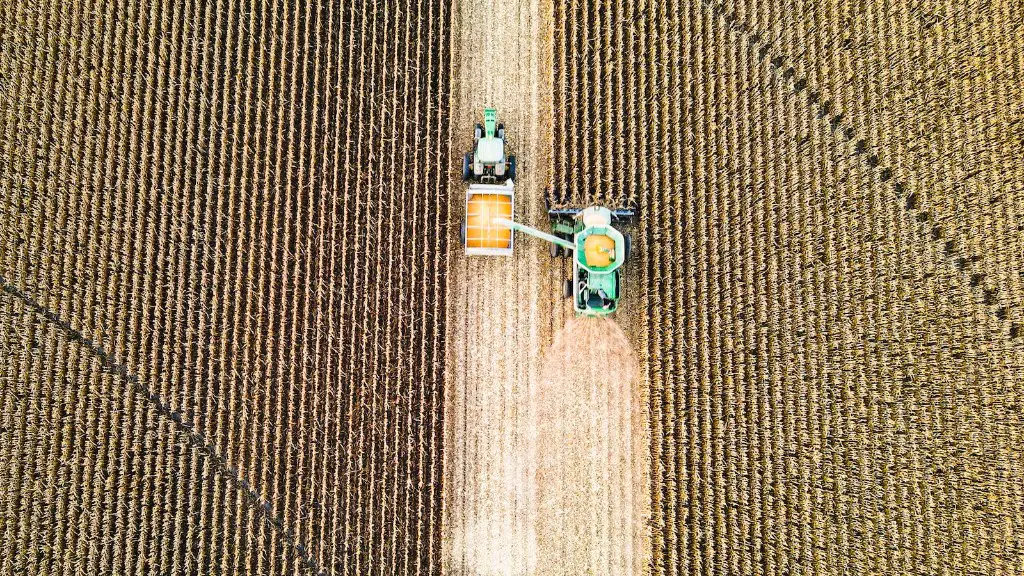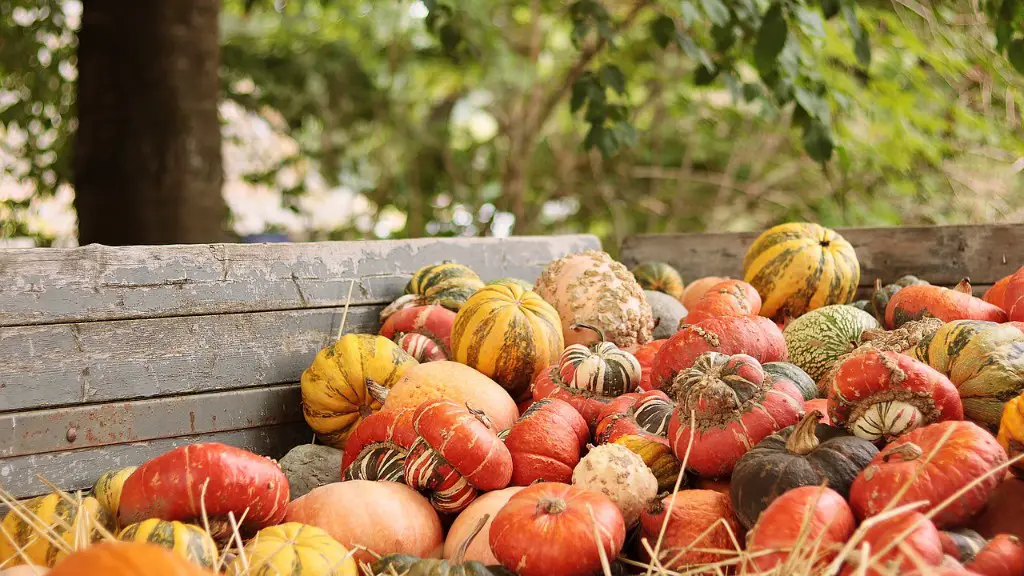Value-added agriculture is a term used to refer to products, services, or activities that add value to raw agricultural commodities. It is a process of transforming agricultural commodities into higher-value products through packaging, marketing and branding, and other processes. Value-added agriculture includes a broad range of activities, from small-scale home-based production operations to large-scale corporate ventures. Examples include processing, packaging, and marketing of agricultural products, and services such as agro-tourism, recreation, and nature-based activities. Value-added agriculture can increase farm revenues and spur economic development, providing opportunities for farmers, businesses and rural communities.
Value-added agriculture offers numerous benefits to farmers and the agricultural industry, including increased income and profits, diversified markets, enhanced employment opportunities and improved quality of agricultural products. Value-added farming also offers the opportunity to capture a larger percentage of the retail price of a product, as compared to traditional commodity production. By selling a value-added product directly to customers—either through a farm stand, farmers’ market, or online—the farmer is able to capture a larger percentage of the retail price.
Value-added agriculture encourages innovative and creative approaches to production, marketing and finance. It can create employment opportunities, or create linkages between the producer and other members of the food system. These activities often begin with a farm-level transformation, such as the addition of value-added processing, packaging, and marketing activities. However, value-added agriculture does not start and end with production, as the success of value-added agriculture depends largely on the value-chain components that accompany it, such as marketing and finance.
Value-added agriculture also offers potential environmental benefits, such as reduced transportation costs, fewer pesticide and fertilizer inputs, and more efficient land use. These benefits can contribute to increased sustainability of agricultural systems, as well as to healthier soil and water resources. By diversifying farms and opening new markets, value-added agriculture also helps to preserve and enhance the long-term economic viability of rural communities.
By meeting the needs of consumers through creative production, marketing, and financial strategies, value-added agriculture offers an opportunity to improve farm income and contribute to the development of rural communities. For the agricultural industry to take advantage of value-added opportunities, resources must be dedicated to education, training and outreach, risk management, and economic development.
Marketing Strategies in Value Added Agriculture
Marketing is one of the most important aspects of value-added agriculture. It is essential to create a marketing plan for a value-added product that informs potential customers about its features, advantages, and pricing. For example, a farmer could create a website to advertise his products, or use pay-per-click advertising, or create a social media presence to help inform customers about the product and its benefits. In addition, partnerships with retailers or organizations that share an interest in the product can help increase exposure and build customer loyalty.
Effective marketing also depends on a number of other factors such as packaging, labeling, and promotion. Packaging and labeling should contain the necessary information to convey the quality and value of the product to the consumer. Promotion of a value-added product is also important, as it can be used to create a unique brand identity and help differentiate the product from competitors. Finally, it is important to market the product in the right places, such as farmers’ markets or other destinations where the target customer might be found.
It is important to create a comprehensive marketing plan for value-added agriculture before embarking on production activities. A plan should include the development of a pricing strategy to ensure that the product commands a premium price sufficient to cover production costs, as well as associated marketing expenses.
Financing Value Added Agriculture
Financing is a key factor in the success of value-added agriculture projects. Farmers may need access to capital in order to purchase equipment and materials, pay for marketing activities and cover other expenses associated with value-added ventures. Financial resources may come from investors, lenders and other sources, depending on the nature of the venture.
For new value-added projects, farmers may require assistance in developing a business plan, which can help to secure financing. A business plan should include an executive summary, market analysis, product information, a financial plan and projections, as well as an operations plan and a risk management plan. Agriculture-focused business training and support is also recommended for farmers interested in launching a value-added agricultural venture.
In addition to traditional sources such as banks and lenders, there are a number of other potential sources of financing for value-added agriculture projects, including government grants and programs, venture capital, and crowd-funding. Farm cooperatives, incubator and accelerator programs, and other public-private partnerships may also offer access to capital. It is important to research the various financing options, as well as each potential source, to identify the best option.
Value Added Agriculture and Food Safety
Food safety is an important consideration when marketing and selling value-added agricultural products. Food safety regulations are in place to ensure that consumers are able to purchase safe, uncontaminated food products. Farmers who engage in value-added activities must adhere to a number of food safety regulations, including label requirements and food handling procedures.
It is important for farmers to understand the regulatory framework associated with value-added activities, and to ensure that their operations comply with applicable state and federal laws. It is also important to understand the potential risks associated with value-added processing, such as contamination from raw materials, processing equipment and environmental sources. Farmers should also consider the need for third-party certification of their value-added products, as this may be required by certain buyers and/or regulatory agencies.
It is also important for farmers to ensure that their operations adequately address food safety and sanitation issues. Developing and implementing good manufacturing practices (GMPs), as well as a food safety plan, can help to reduce the risk of contamination and food-borne illness. Additionally, regular training of employees on food safety and sanitation is recommended.
Value Added Agriculture and Rural Development
Value-added agriculture can contribute to the economic development of rural communities by providing income and employment opportunities, attracting entrepreneurship, enabling diversification and stimulating investments.Value-added agriculture ventures have the potential to link small farmers to larger markets, contributing to economic growth in rural areas. For instance, some small-scale rural farmers have started artisanal food businesses, creating jobs and providing opportunities for local entrepreneurs.
Additionally, value-added activities can be an important part of diversification in agriculture. Diversification can increase farm profitability, reduce risk, and improve the local economy. For example, the development of agrotourism activities, such as pick-your-own operations, can generate additional income for farmers and provide additional employment opportunities within the community.
Value-added agriculture ventures also create opportunities for investment within rural communities. Investors may be interested in value-added opportunities, particularly if the venture is positioned in a high-growth industry. Additionally, venture capital firms may see the potential for profits within certain value-added opportunities and be willing to invest. Thus, value-added agriculture can contribute to increased economic activity within rural communities.
Value Added Agriculture and Sustainability
Value-added agriculture can also contribute to sustainability in agricultural systems, by encouraging more efficient practices and increased resource conservation. For example, value-added production can lead to reduced transportations costs, fewer inputs (such as fertilizer and pesticides), improved water quality and more efficient use of inputs. Additionally, diversification of farm operations can reduce the risk of losses associated with commodity production.
Value-added agriculture can also contribute to the sustainability of rural communities, by preserving and enhancing the long-term economic viability of the community. This type of venture encourages innovation, and helps to create a resilient local food system. Additionally, the development and increased sale of higher-value products can stimulate economic activity and generate additional income for farmers and the local economy.
Value-added agriculture can also help to increase access to healthy, locally-produced foods, making them available to a wider portion of the population. This can encourage healthy eating, thus benefiting consumers and public health initiatives. Finally, by increasing the variety of locally-produced food, value-added agriculture can help to improve the regional economy and enhance the quality of life for rural communities.




